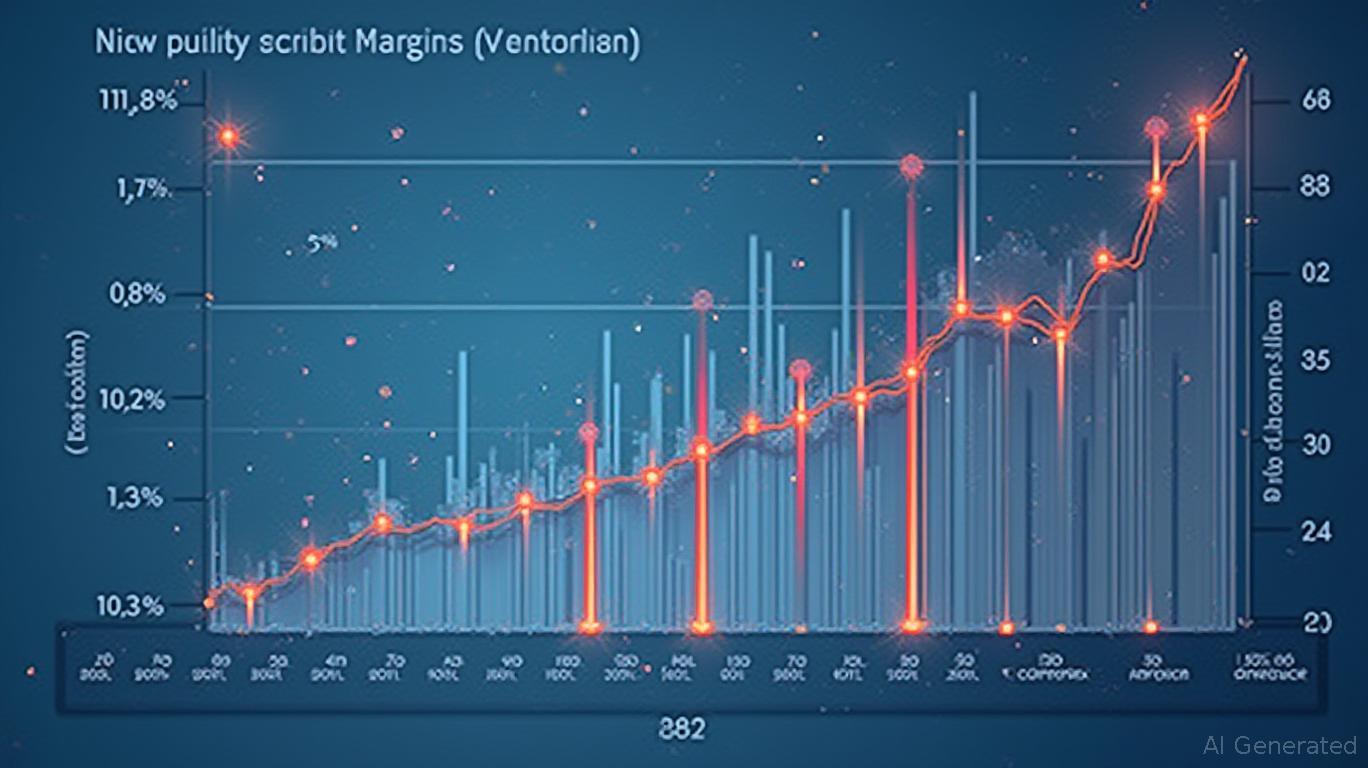US Corporate Profits Decline Amid Tariff Fears: Navigating Sector Vulnerabilities and Hedging Strategies
The U.S. corporate profit margin decline to 9.8% in Q1 2025—a 1.4-percentage-point drop from a year earlier—marks a critical inflection point for investors. Tariffs and geopolitical decoupling are reshaping industries, compressing margins in trade-reliant sectors while opening opportunities in domestic infrastructure, energy, and hard assets. This is not a temporary hiccup but a structural shift requiring bold hedging strategies to navigate profit contraction and inflation risks.

Sector Vulnerabilities: Tariffs as a Margin-Killer
The first wave of casualties is hitting industries tied to global supply chains:
Technology: Geopolitical Volatility and Margin Erosion
The tech sector, despite TSMC's Q1 revenue beat driven by AI chip demand, remains 30% below its 2023 peak. . While
benefits from AI, broader sector weakness stems from 40–60% of tariff costs absorbed by firms, squeezing margins. The EU's push for tech sovereignty—via its €20 billion cloud infrastructure fund—adds to fragmentation, making U.S. tech giants like Amazon (AWS) vulnerable to regional competitors.Manufacturing: Port Volume Collapse and Supply Chain Costs
U.S. West Coast port volumes fell 18% month-over-month after recent tariff hikes, signaling reduced trade volumes. European manufacturing is also in crisis: German industrial production has contracted for three straight quarters, with energy costs 35% above the EU average. . This sector's reliance on global inputs makes it a prime candidate for margin-driven shorting.
Automotive: EV Sales Stumble and Inflationary Pressures
Global EV sales growth slowed to 12% YoY in Q1 2025, down from 28% in 2023, as energy costs and supply chain bottlenecks disrupt transitions to electric vehicles. . Automakers exposed to cross-border tariffs (e.g., Tesla's China-Europe trade) face dual risks of margin compression and falling demand.
Decoupling Beneficiaries: Where to Deploy Capital
The same forces squeezing global industries are creating winners in domestic and hard-asset sectors:
Renewables and Infrastructure: The Decoupling Dividend
European capital repatriation—€450 billion in 2024—prioritizes defense and renewables. Sweden's OMX Index outperformed the Euro Stoxx 50 by 14% in Q1 2025, driven by investments in green energy and NATO-aligned defense. . U.S. infrastructure plays, like utilities and renewable energy firms (e.g., NextEra Energy), are similarly positioned to benefit from regionalization trends.
Resource Nationalism: Mining and Critical Minerals
The EU's Critical Raw Materials Act has spurred €15 billion in mining investments in Scandinavia and the Balkans, while U.S. interest in Greenland's rare earth deposits signals a shift toward strategic resource control. . Investors should favor companies with direct exposure to critical minerals (e.g., Freeport-McMoRan) and gold miners, as central banks add 1,250 metric tons of gold in 2024, driving prices above $3,000/ounce.
Inflation Hedges: Commodities and REITs
With U.S. core inflation expected to hit 4% by late 2025, inflation-protected assets are critical. Real estate investment trusts (REITs) offer defensive income streams (4.8% yields in Europe), while energy infrastructure ETFs (e.g., XLE) benefit from geopolitical energy demand. .
Strategic Hedging: Short Tariff-Sensitive Stocks, Buy Hard Assets
- Short Sectors Exposed to Trade Volatility:
- Tech: Short positions in global chipmakers (e.g., ASML) and cloud stocks (e.g., Microsoft's Azure division).
- Manufacturing: Target automakers with cross-border supply chains (e.g., BMW, Toyota).
Retail: Short retailers reliant on Asian imports (e.g., Walmart, Target).
Allocate to Inflation-Resistant Assets:
- Gold and Mining ETFs: GDX (45% YTD gain) or physical gold via GLD.
- REITs: Favor industrial and logistics REITs (e.g., Prologis) benefiting from nearshoring trends.
Energy Infrastructure: XLE for exposure to oil/gas assets and critical mineral plays.
Geopolitical Plays:
- European Infrastructure: ETFs tracking Nordic and German equities (e.g., EWW for Mexico, EIDO for European infrastructure).
- Resource Stocks: Freeport-McMoRan (FCX), Newmont (NEM), or rare earth specialists like Alkane Resources (AAN.AX).
Conclusion: Act Now—The Profit Contraction Cycle is Here
The data is clear: 73% of CFOs are delaying major expenditures, and the Fed's hands are tied as stagflation risks rise. Investors who short tariff-sensitive sectors and allocate to hard assets will outperform. The GDX/NDX ratio's reversal—from 0.15 in 2023 to 0.27 in 2025—signals a permanent rotation away from tech into tangible assets. This is not a time for caution—it's a time to act decisively.
The profit decline cycle is upon us. Short the vulnerable, buy the hedges, and position for a world where supply chains are regionalized and inflation is a constant. The next 12 months will separate the prudent from the complacent.

Comments
No comments yet